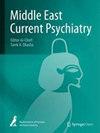智能手机成瘾对埃及人注意力控制和睡眠的影响——一项在线调查
IF 1.6
Q3 PSYCHIATRY
引用次数: 0
摘要
智能手机的广泛使用使得研究人员必须研究智能手机成瘾的不良影响。我们的目的是研究在埃及青少年和成人样本中智能手机用户中智能手机成瘾、失眠和注意力缺陷的危险因素。一项在线调查在埃及社交媒体团体中传播。参与者完成智能手机成瘾简易量表(SAS-SV)、失眠严重程度量表(ISI)和注意控制量表(ACS)。两千七百一十六人回应了我们的调查,平均年龄为31.4±10.3岁。2386名(87.8%)参与者记录了智能手机成瘾,平均每天使用智能手机的时间为5小时(IQR: 3-7)。智能手机成瘾与年龄更小、教育程度更高和城市居住(未调整或调整)之间存在显著关联。二元logistic回归分析显示,影响中度至重度失眠概率的唯一因素是较高的SAS-SV评分,无论是未调整(OR = 1.1, 95% CI: 1.08-1.1)还是调整(OR = 1.09, 95% CI: 1.08-1.11)。多元线性回归分析显示,SAS-SV得分(P < 0.001)、ISI得分(P < 0.001)、女性得分(P < 0.001)、农村居民得分(P = 0.025)与ACS总分较低相关。另一方面,年龄越大(P < 0.001)和停止使用智能手机与就寝时间间隔越长(P = 0.004)会增加注意力得分。智能手机成瘾在埃及很普遍,这值得特别关注,因为它可能会带来失眠和注意力控制能力差等负面后果,尤其是在年轻人群中。本文章由计算机程序翻译,如有差异,请以英文原文为准。
The impact of smartphone addiction on attention control and sleep in Egypt—an online survey
The widespread use of smartphones makes it imperative for researchers to study the adverse effect of smartphone addiction. We aimed to study the risk factors of smartphone addiction, insomnia, and attention deficit among smartphone users among a sample of Egyptian adolescents and adults. An online survey was disseminated among Egyptian social media groups. Participants were requested to complete Smartphone Addiction Scale-Short Version (SAS-SV), Insomnia Severity Index (ISI) scale, and attention control scale (ACS). Two-thousand seven-hundred sixteen responded to our survey with a mean age of 31.4 ± 10.3 years. Smartphone addiction was documented in 2386 (87.8%) participants, with a median daily time for smartphone use of 5 h (IQR: 3–7). A significant association was found between smartphone addiction and younger age, higher educational levels, and urban residency (unadjusted or adjusted). Binary logistic regression analysis showed that the only factor affecting the probability of moderate to severe insomnia was the higher SAS-SV score, either unadjusted (OR = 1.1, 95% CI: 1.08–1.1) or adjusted (OR = 1.09, 95% CI: 1.08–1.11). Multiple linear regression analysis showed that higher scores on SAS-SV (P < 0.001) and ISI (P < 0.001), being female (P < 0.001), and being of rural residency (P = 0.025) were associated with lower total scores on ACS. On the other hand, older age (P < 0.001) and longer intervals between smartphone cessation and bedtime (P = 0.004) were found to increase the attention score. Smartphone addiction is prevalent in Egypt, which deserves special concern as it may have negative consequences such as insomnia and poor attention control, particularly in younger age groups.
求助全文
通过发布文献求助,成功后即可免费获取论文全文。
去求助
来源期刊

Middle East Current Psychiatry
Medicine-Psychiatry and Mental Health
CiteScore
3.00
自引率
0.00%
发文量
89
审稿时长
9 weeks
 求助内容:
求助内容: 应助结果提醒方式:
应助结果提醒方式:


